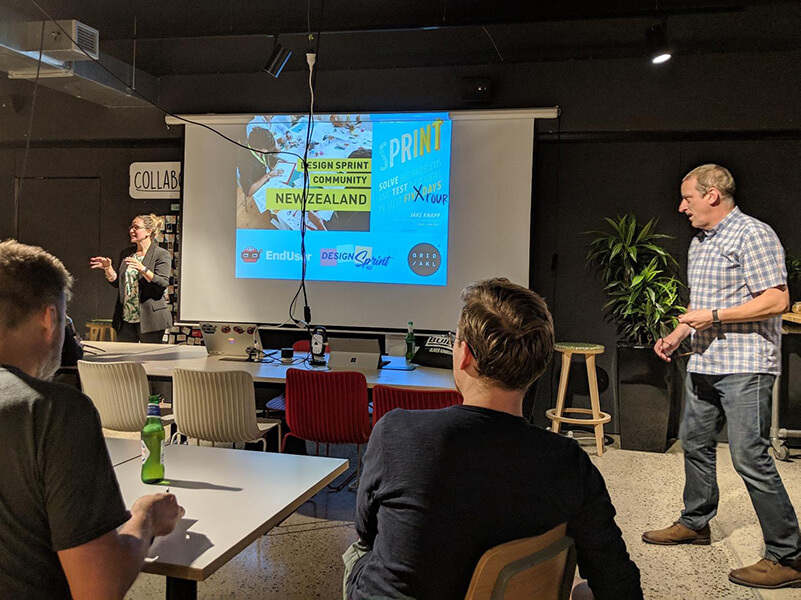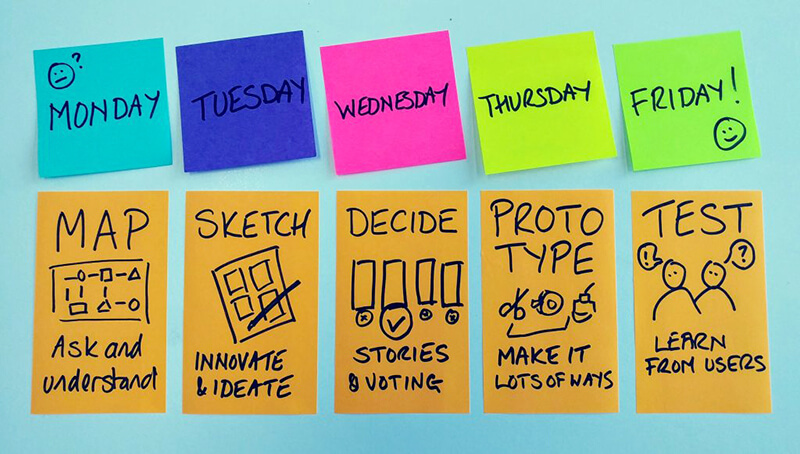This month we caught up with the deep-thinking, creative and very personable, Jon Dunning. Two Sparrows gets to enjoy his company, puns and interesting insights most days at the office we co-share, along with others. Jon is a business designer, coach and leadership training facilitator.
Jon, please can you tell us more about what you do?
I facilitate leadership training and work with emerging leaders. I also help businesses design solutions and think differently about how they create and deliver their products and services. It’s hard to give myself a short title, but if I had to, I’d call myself a business designer.
What drives you?
Through my work, I want to help people see a different way of looking at the world and how they contribute to it. I want to open people up and give themselves permission to think about things in a different way.
You work with people who are already in leadership and people who aspire to lead. What makes a good leader?
Someone who manages themselves and their team well and who, not only has the technical abilities to carry out their role, but has the soft skills, like effective communication.
I think there are three key attributes that make a great communicator and leader:
- someone who listens rather than talks,
- is empathetic rather than sympathetic, and
- challenges their team rather than chastising them.
Can you tell us a bit more about what it means to be a business designer?
A business designer draws on design thinking techniques and tools to help organisations and their teams solve problems, and create and implement better processes, products and services. A business designer will also focus on improving team dynamics. For me, it’s about focusing on helping businesses and people find ways to perform and deliver in a way that is human-centric – which means focusing on improving the outcomes for people (both staff and customers).
How do we achieve people-focused outcomes?
People-focused outcomes explore and understand the impact of a product or service on the end-user. Take, for example, public transport. We don’t really learn much about people’s experiences of a service by just gathering quantitative data and asking questions like, “how often did you use the bus this week? Or, “how long did the journey take you?”
If we’re invested in people-focused outcomes, we have to ask open and deeper questions like: “how’d you find your journey today?” Or, “what does good public transportation help you accomplish?” We have to think more broadly about what a product or service enables people to do. With public transport, it could mean more time with their family or a more relaxing commute, so they are less stressed when they get to work or return home.
Asking questions in this way enables businesses to gain valuable insights, and allows people the opportunity to give feedback, and trust that it is valued and will be actioned. It’s about moving away from assumptions and thinking about doing business differently.
What are design sprints and why are they valuable?
Design sprints are four days of troubleshooting a specific problem or concern in order to develop a prototype solution that can be tested with users. These four-day sprints enable businesses to fail fast. They can explore and learn about solutions, devise prototypes, and gain valuable insights that might otherwise take weeks or months to discover.
Design sprints encourage people to collaborate, experiment and see previously hidden connections. It helps people interpret a problem in a personal and creative way so that they can devise different ways of seeing things and judge the best possible solution. It’s about addressing the biggest issues businesses are facing right now. I’ve discovered that people frequently haven’t really had conversations like this before.
What’s your background and experience?
In the U.K, I was a stage, radio and video performer in the ’80s. I’ve also worked my way up the ranks from temp to the manager in a telecommunications company. In my varied roles, I learnt about office and people management and I’ve always enjoyed interacting with people.
In NZ, I’ve been a part of a business improvement team with local government. Here, I helped design human-centric solutions, in what can be a difficult sector. I’ve also delivered leadership training to NZ’s uniformed services. In these traditionally command and control type organisations, I’ve helped people explore and develop their soft skills, by asking questions like, “What does empathy or intergenerational support look like?” or “How can we embrace diversity and be supportive of all our staff?”

What kind of feedback do you get from participants of your sprints?
Most find design sprints to be energetic and engaging – an interesting way of tackling real problems with creativity and collaboration. They like the volume, tone and spacing of the delivery. They learn that innovation and development is not about hierarchy or a few key specialists, but rather a culture that can be fostered and embedded within an organisation. Innovation is about focusing on the audience and not the performance, and not being afraid to challenge existing processes in a positive manner.
When’s a good time for people to get in touch with you?
Anytime they’re unsure of what to do next or would like to view problems, challenges and opportunities in a new light and through a different lens. Sometimes I’ve been brought in early and others I’ve been brought in late – either way, a sprint has frequently been invaluable in helping teams resolve big issues. It sounds clichéd that a crisis can bring out the best in people. But I’ve witnessed that, when the rubber hits the road, it provides an opportunity for people to perform in an exemplary fashion that the constraints of business won’t normally allow.
What are you currently working on?
I’m working on a visual handbook for leaders, sharing the diagrams and pictures I have found useful in explaining concepts and ideas to leaders and teams over the years.
What do you enjoy doing outside of work?
I write short stories and poetry. I enjoy what you can do with words and have fun with wordplay and puns. When I have time, I enjoy writing long-form letters. This is a skill that has many benefits to the writer and the receiver and, these days, we often miss out on.
Who is your ideal client?
I am always keen to work with people and organisations who genuinely want to change. They may have a bunch of problems or challenges that they don’t know how to manage or get past. I also like working with people who are keen to understand how to involve their teams in creating solutions and who want to empower their people to have authorship as well as ownership of their work.
I want to help those who get excited about looking at alternative ways of doing things; people who have the courage and the creativity to experiment, take a punt and not be afraid of making mistakes; people who are honest about what they’re trying to achieve; people who see the value in soft skills like compassion and communication; people who want to demolish barriers, so that everyone is free to engage and contribute.
You can find out more about Jon’s work at jondunning.com and designsprint.nz
